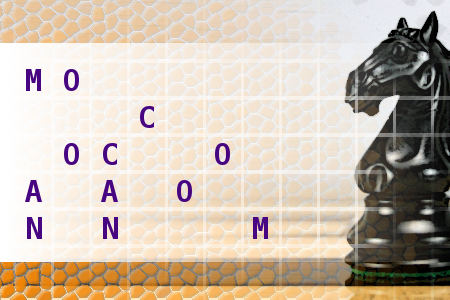Chess Knight Move
Find the country and its capital city, using the move of a chess knight. First letter is M. Length of words in solution: 6,6.
Memorial Day jokes for 2024
Observed on the last Monday in May every year, Memorial Day is a federal holiday in the United States that honors and remembers those who have died while serving in the military.
Enjoy these light-hearted jokes to add some fun to your Memorial Day!
Why did the soldier bring a ladder to the barbecue?
He wanted to raise the steaks!
What do army guys say when they forget Memorial Day?
Ah, shoot!
What is your favorite Memorial Day tradition?
Spilling BBQ sauce on white pants.
Which day do Alzheimer's patients forget?
Memorial Day.
A small boy was staring at the names on a wall.
The pastor explained,
"They are those who died in the service."
The boy asked,
"The 9 o'clock service or the 11 o'clock?"
What's a cow's favorite Memorial Day activity?
Going to the moo-vies!
Why are there no knock-knock jokes on Memorial Day?
Because freedom rings!
Did you hear about the man who got his car's AC fixed after Memorial Day?
He came back singing "Freon isn't Free."
Why don't soldiers play hide and seek on Memorial Day?
Because good luck hiding when everyone's off duty!
What is the best Memorial Day Sales pitch?
To remember the millions of brave soldiers who died for our country, we're giving you 30% off on all corduroy pants and toaster ovens.
What's the favorite thing about Memorial Day for employees?
Saying to co-workers, "See you next Tuesday."
What do army guys read on Memorial Day?
Magazine.
On Memorial Day, the teacher asked the students, "Do you know why God created wars?"
Someone among students: To teach us, geography?!
How can you offend a close relative of a fallen soldier on Memorial Day?
Wish them "Happy Memorial Day."
Do you know that The Air Force is the most patriotic arm of the US military?
Because they're USAF.
What fruit do soldiers hate?
The Pommegranade.
In the military, how do you refer to children?
Infantry.

